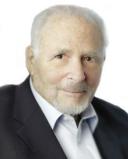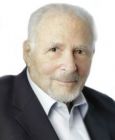From a distance of 20 feet, without your knowledge or consent, surveillance cameras, microphones and physiological sensors are applying computer algorithms to process your gait, facial expression, gestures, voice, posture, heart rate, blood pressure and skin temperature—determining within seconds if you are lying or telling the truth.
“Diogenes,” the lie-catching machine in the sci-fi screenplay a friend and I wrote 20 years ago, made no mistakes. And its mere existence changed the way people interacted: Bargainers would no longer agree to meet in person, juries became superfluous, salesmen were forced to be honest in their claims, and suspicions of marital infidelity were resolved in an instant (for a fee).

In real life, we aren’t quite there yet, but our recent research on truth and falsehood is bringing us closer than I ever expected it would. I’ve spent nearly 40 years studying how changes in demeanor (face, body and voice) might betray a lie. I've focused on serious lies in which life, freedom, reputation, or the continuation of an important relationship were at stake, rather than the white lies of everyday life involving politeness, flattery or exaggeration. My original impetus was to help doctors evaluate whether psychiatric inpatients claiming to no longer feel depressed were lying with the intent of committing suicide free of the hospital’s supervision. But in response to interest from law-enforcement and intelligence agencies, my associate—the late professor Maureen O’Sullivan—and I extended our focus to lies about taking money, or false claims about strongly-held political opinions. Since 9/11, our experiments have focused on the lies told by political extremists, in the hope that our results will have relevance to anti-terrorism initiatives. We set the rewards for success and the punishment for failure as high as ethics committees permit.

We have not found the modern equivalent of Pinocchio’s nose—nothing in face, body, voice, speech or physiology that is unique to lying, and never present when someone is worried, thoughtful, cautious, perplexed or nervous. While some still pursue that goal (and a few claim to have found it), I doubt that such a silver bullet actually exists. Instead, our measurements of facial muscular movement, gestures, voice and speech uncover what I call hot spots—signs that something is amiss, or that the full story is not being told.
The typical hot spot is a momentary conflict between the words spoken and the sound of the voice, the gesture, or the facial expression. Just as important are very brief micro expressions that can flash across a person’s face in 1/25 of a second. A micro looks exactly like a normal facial expression, except it is so fast that most people don’t see it. It is always a sign of a concealed emotion—sometimes deliberately concealed, sometimes repressed. Just as important is a slight edge in the voice that doesn’t fit calm words.
In our experiments in which there are only two possibilities—someone is either lying or telling the truth—hot spots allow high accuracy in distinguishing one from the other. In real life, hot spots occur for many reasons, such as remembering an argument at breakfast with your spouse, worrying about missing a flight, or being annoyed at an airport screening station. Lying to conceal malicious intent or past wrongdoing is only one, and not the most frequent, reason that hot spots occur where terrorists might lurk.
Nevertheless, learning how to identify hot spots can be useful in figuring out where to probe further in an interview, or who among the millions who wait on line in our airports each day should be asked a few questions about the purpose of their trip. We are training law-enforcement and national-security officials, here and in England, to identify hot spots, emphasizing that they are not signs of lying, only that something may be amiss. People can learn to recognize the micro expressions in an hour, and the benefit lasts. We don’t know how long it takes to learn to recognize the many other hot spots, who learns the most and the least, and when a refresher course is needed. (Paul Ekman International is a company that provides four-day courses on evaluating truthfulness and a three-day course on emotional skills, primarily to the corporate sphere, in many countries.)
Another line of active research is trying to develop the modern equivalent of our sci-fi Diogenes lie-catching machine. The hardware and software to identify hot spots in real time isn’t ready for prime time now, but it is progressing. Soon, automated hot spot detectors could evaluate facial expressions and bodily physiology instantly, from a distance. But before it is deployed as a substitute for a highly-trained human observer, it is essential to determine whether it is as accurate as such an observer, and, if it were to be used as an aid rather than a substitute, that it doesn’t distract and lower observer performance.
The ACLU has complained that hot spots aren’t just shown by terrorists, but also lead to the apprehension of wanted felons, illegal immigrants, or smugglers. I am afraid there is no terrorist-specific hot spot, but I am not personally convinced it is bad to identify others breaking the law. Another criticism is the possibility that members of minority groups, especially those whose names or appearance suggest they are Arabs, may naturally be more uncomfortable in places such as airports, and for that reason may show up more often as suspicious. That is possible, and even warning about it during training may not be sufficient to avoid such mistakes. However, I favor deploying an independent organization to check periodically on the performance of those doing hot spot detection, to make certain they are not slipping into racial profiling.
Another concern is what happens to the information that would be picked up by an automatic hot spot detector. Suppose heart rate and blood pressure readings strongly suggest someone is on the verge of a heart attack. After a warning that an emergency room might be a smarter destination that an airplane, what will happen to this private medical information? Regulations need to be developed to insure that it is erased rather than secretly sold to corporations or insurers.
People around the world are already using and teaching these new approaches to identifying people who might intend harm. There is no putting this genie back in the bottle. The issue is how to use these new methods wisely, cautiously, and with safeguards for privacy and civil liberties.
Paul Ekman, a retired professor of psychology at UC San Francisco, has been studying facial expressions and gestures for more than 40 years. He is the author of many books. His most recent book Moving Towards Global Compassion is available as an e-book at www.paulekman.com.
Updated from an article by Ekman for the Washington Post in 2006.
To receive updates on news regarding facial recognition technology, Like and Follow the Paul Ekman Group on Facebook and Twitter.




